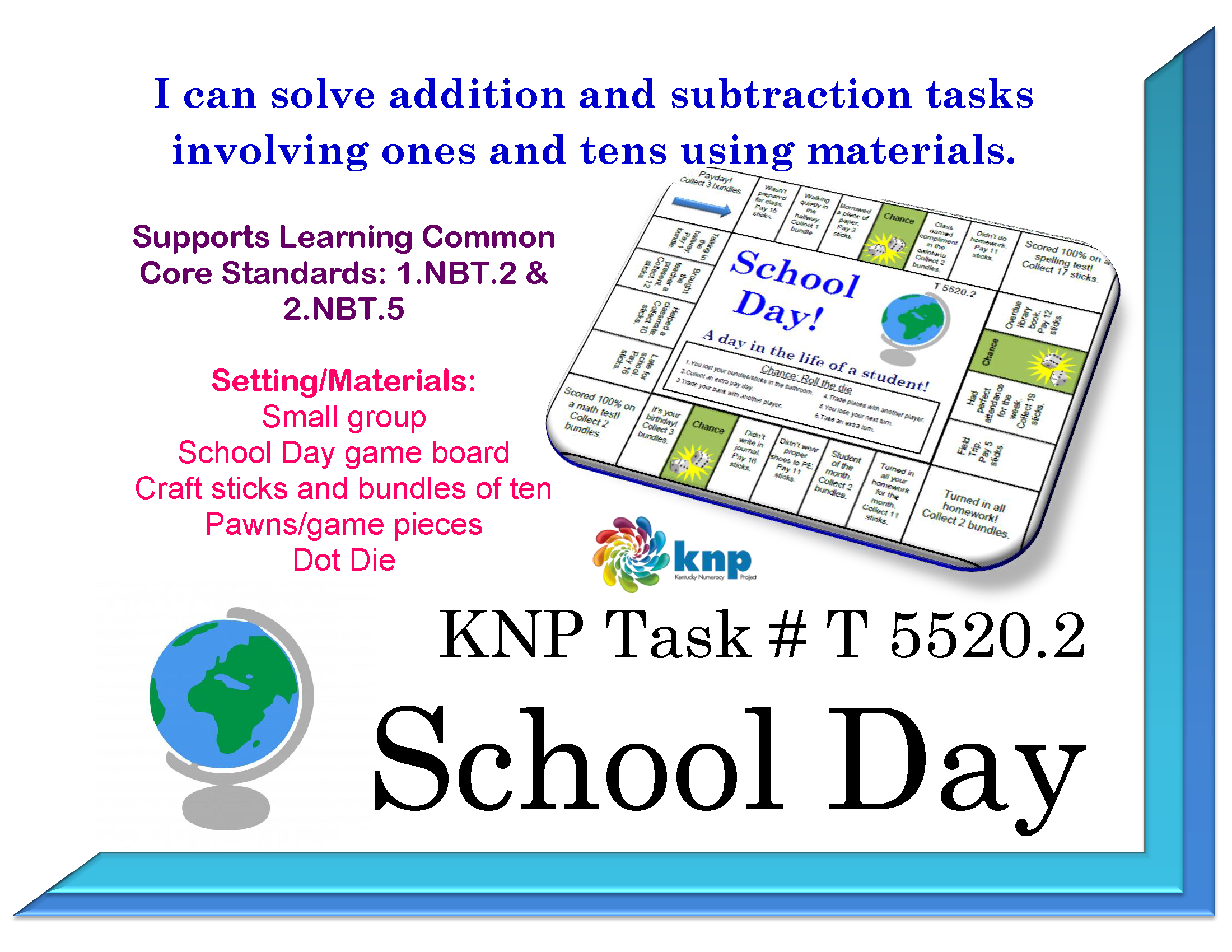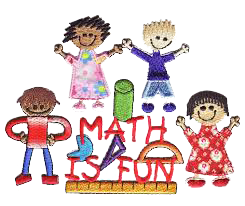School Day (tens and ones)
KNPIG ID #T 5520.2
What's this activity about?
A classic board game is transformed into an engaging math story about your child’s school day using the concept of tracking rewards and penalties. She or he will be practicing adding and subtracting one and two digit numbers while working their way around a game board collecting rewards for positive school deeds or paying in the opposite situation. This is a great game to play with your child and an opportunity to model good mathematical practices, and promote important life skills.
Game adapted from Scotty Bratcher's (Grayson County Public Schools) Original Version.
What materials do we need?
School Day game board
Craft sticks and bundles of ten- Craft sticks and bundles are a great way to represent how ten single units create one ten. Straws can also be used. You will need loose sticks/straws and then bundled sticks/straws in groups of ten.
The bundles can be separated and put together as needed throughout the game. We recommend hair elastics to keep the sticks/straws together.
Pawns/game pieces
Dot Die

How do we play?
Choose one player to be banker. All players place their pawns on the payday space. Banker pays each player 3 bundles. The youngest player goes first by rolling the dot die and moving his/her pawn that number of spaces. Each player will read their space and receive, or pay sticks or bundles as directed. If a player lands on a “chance” space they will follow the directions in the middle of the board (roll the dot dice and follow the directions). Each player gets paid three bundles every time they pass payday. The player with the most sticks and bundles at the end of the game wins. You can determine game play by number of turns, or by time.
Where’s the Math?
There is a lot of math in this game that reinforces what your child is learning in school. Your child is being challenged to use what they know about place value to solve addition and subtraction problems. They should recognize that the bundle is a unit of ten, which is composed of ten single units. A single unit would be a stick/straw. They are also being challenged to work with tens and ones at the same time, rather than with just ones or just tens. This is a big step for second graders and lays the foundation for working with larger numbers using strategies based on place value and grouping units.
Things to Think About:
This activity is a great conversation starter. Working with rewards and penalties is a great way to apply addition and subtraction to real life situations. Your child may earn points or even money for chores or good deeds, you can also reinforce that when a child wants something for themselves, they must pay for it. You can talk about predicting whether or not you have enough money by using the subtraction strategies in this game. Also, you can spark conversations about your child’s actual school day without much effort. The prompts on the spaces may remind your child of something similar that happened during their own school day.
This game is very playable and will keep you and your child engaged. The whole family can play this game and can be a challenge for all people. Modeling while you play is very important if your child is struggling at first. Say out loud how you are thinking through your problems, so your child becomes comfortable using their own strategies. This will also encourage them to narrate as they think, so you see how they are most comfortable working through addition and subtraction problems.
Feedback
Send us your thoughts and ideas about these activities. Email the KCM

